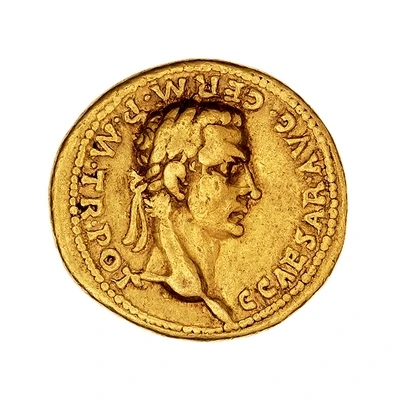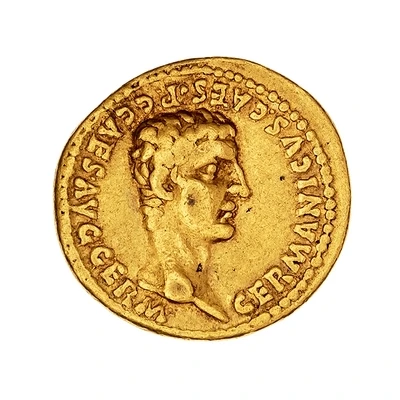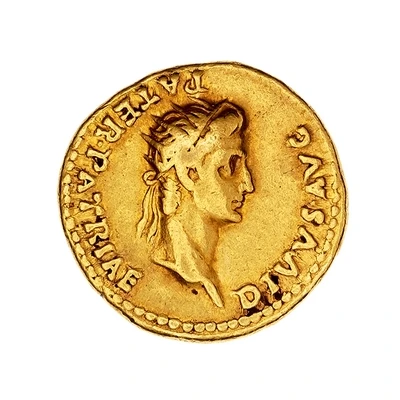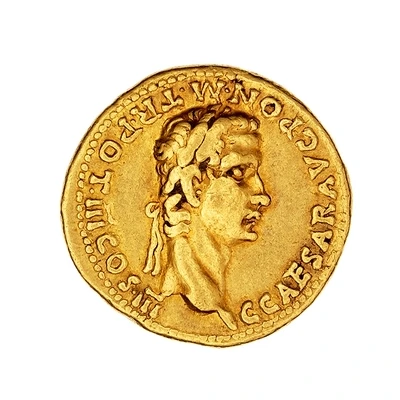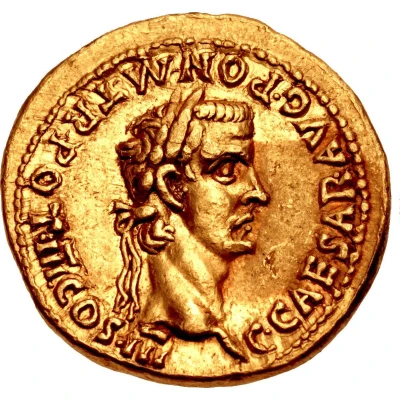
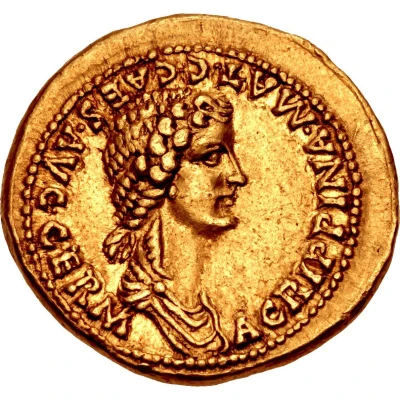

© Classical Numismatic Group, Inc.
Aureus - Caligula tribute to Agrippina the Elder; AGRIPPINA MAT C CAES AVG GERM
40 year| Gold | 7.6 g | 19 mm |
| Issuer | Rome › Roman Empire (27 BC - 395 AD) |
|---|---|
| Emperor | Caligula (Caius Augustus Germanicus) (37-41) |
| Type | Standard circulation coin |
| Year | 40 |
| Value | 1 Aureus = 25 Denarii |
| Currency | Denarius, Reform of Augustus (27 BC – AD 215) |
| Composition | Gold |
| Weight | 7.6 g |
| Diameter | 19 mm |
| Shape | Round (irregular) |
| Technique | Hammered |
| Orientation | Variable alignment ↺ |
| Demonetized | Yes |
| Updated | 2024-10-05 |
| Numista | N#247138 |
|---|---|
| Rarity index | 100% |
Reverse
Bust of Agrippina, draped, right; her hair is waved from brow downwards and knotted in a long plait at back; one lock falls loose down neck.
Script: Latin
Lettering: AGRIPPINA MAT C CAES AVG GERM
Unabridged legend: Agrippina Matron Caius Caesaris Augustus Germanicus.
Translation: Agrippina, mother of Gaius Caesar, emperor (Augustus), conqueror of the Germans.
Comment
Mass varies: 7.61–7.65 g;Source: Online Coins of the Roman Empire (OCRE)
Vipsania Agrippina was born in 14 BC to Julia the Elder, daughter of Caesar Augustus, and to his right-hand-man Marcus Agrippa. Though her Julio-Claudian family was the most powerful in the Empire, it was also shot through with intrigue, tension, and untimely death. Her father died when she was only two. A few years later Augustus exiled her mother for serial adultery, effectively orphaning her and her three brothers, who were taken into the imperial household and raised by the emperor and his wife, the arch-manipulator Livia Drusilla. In the drama-filled last decade of Augustus' reign, all three of her brothers died young, or were murdered, clearing the path for the succession of Livia's son Tiberius. Agrippina was also married during this span, between 1 BC and AD 5, to Germanicus, the charismatic nephew of Tiberius and her own second maternal cousin. Though supremely political, the union was also very happy and the couple eventually had nine children, including the future emperor Gaius 'Caligula' and empress Agrippina the Younger. All ancient historians agree Agrippina was a model of rectitude and matronly virtue; she also went beyond the traditional role of a Roman wife and mother in accompanying Germanicus on risky military campaigns and foreign postings. The Roman people admired her courage; however she also had an imperious nature and longed for the day when her husband would inherit supreme power. The mysterious death of Germanicus while on a diplomatic mission in the East in AD 19 dashed these hopes. Agrippina believed Tiberius and/or Livia had a hand in his demise and made no secret of her suspicions. This put her squarely in the crosshairs of Sejanus, Tiberius' unscrupulous Praetorian prefect, who waged a patient campaign to undermine her in the eyes of Tiberius and the public. In AD 29 she was charged with treason and banished to Pandataria, a remote island; repeatedly abused and starved, she died four years later. Upon the death of Tiberius, her son Gaius 'Caligula' became emperor and rehabilitated his mother's reputation.
Interesting fact
One interesting fact about this coin is that it features an image of Agrippina the Elder, who was the mother of the emperor Caligula and a powerful figure in her own right. She was known for her intelligence, political savvy, and ruthless ambition, and was often depicted on coins and other artifacts of the time. The coin's tribute to her suggests that she was held in high esteem by the Roman people and her son, the emperor.
